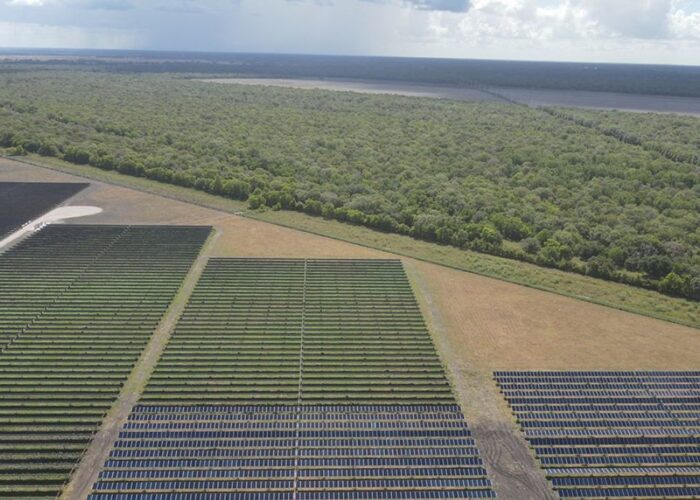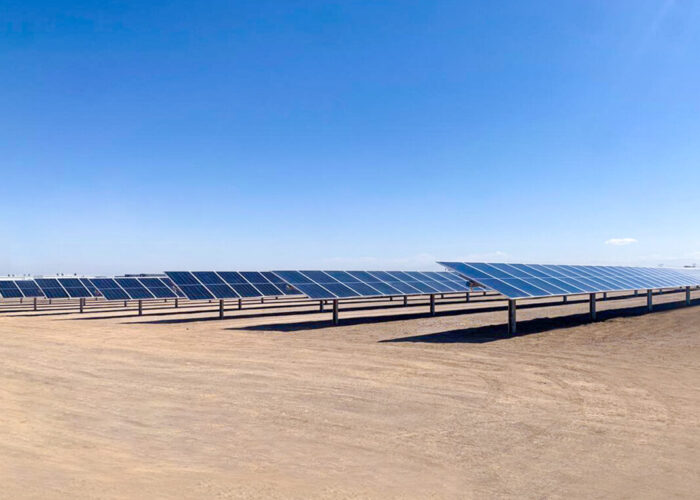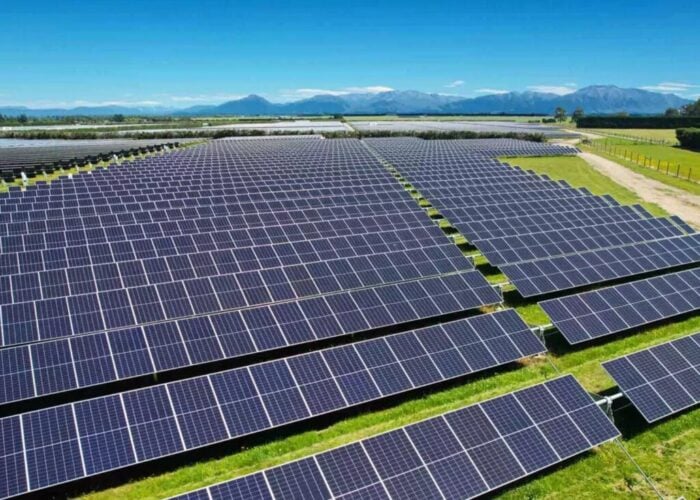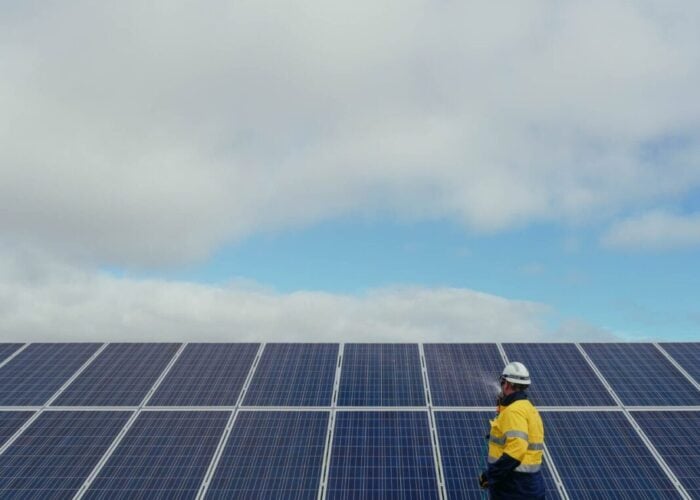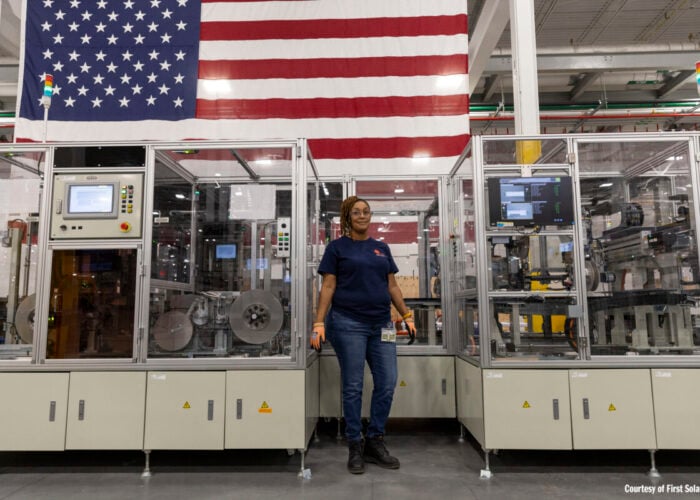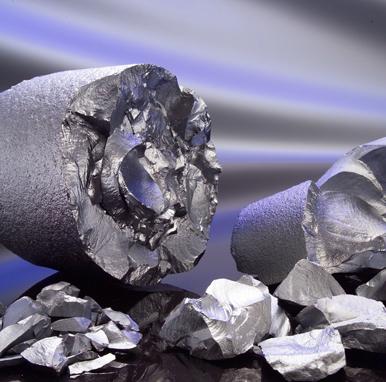
The dynamics of solar supply in the US are continuing to shift.
The Department of Commerce (DOC) may be reopening anti-dumping tariff investigations into Southeast Asian factories – which almost exclusively supply the US – just as Joe Biden’s two-year waiver on tariffs is due to expire; the Secretary of the Treasury, Janet L. Yellen, said on a visit to China that she “wouldn’t rule out” further trade measures against Chinese manufacturers’ overcapacity; and the announcements for new module assembly plants – and some cell producers – on US soil keep coming.
Try Premium for just $1
- Full premium access for the first month at only $1
- Converts to an annual rate after 30 days unless cancelled
- Cancel anytime during the trial period
Premium Benefits
- Expert industry analysis and interviews
- Digital access to PV Tech Power journal
- Exclusive event discounts
Or get the full Premium subscription right away
Or continue reading this article for free
And there is another elephant in the room. Amongst this uncertainty, questions are being raised over whether the Inflation Reduction Act (IRA) is up to the task of bringing upstream solar supply to North America.
Its incentives have so far resulted in a plethora of module assembly plant announcements, but the number of solar cell factories – which would supply the module assemblers in a domestic ecosystem – is far lower.
In a forthright address to the US Senate Finance Committee in March, CEO of US-based cadmium telluride (CdTe) thin-film manufacturer First Solar, Mark Widmar, said that “not even one of the crystalline silicon panels installed [in 2023] was assembled with American-made solar cells”.
Looking further upstream, there is one reliable wafer plant announcement in the US: Hanwha Qcells’ Georgia facility. CubicPV pulled out of its plans for a 10GW wafer factory earlier this year.
Further upstream still, US polysilicon production is floundering; REC Silicon shut down its facility in Montana in February and then delayed operations at its Washington state plant until Q2 this year. A glimmer of good news came last month when relative newcomer Highland Materials secured US$255.6 million to build a new 16,000 metric ton (MT) facility.
Nonetheless, Mike Carr, the CEO of the Solar Energy Manufacturers for America (SEMA) coalition, tells PV Tech Premium he is “optimistic” about the prospects for an upstream US supply as long as certain conditions are met under the IRA.
The IRA vs. the price collapse
In a public statement last month, SEMA recommended that the US government expand the domestic content tax adder to account for the origin of polysilicon and wafers in its definition of domestic products.
Carr expands on this, saying that the guidance for domestic content released by the Treasury Department “had some confusing elements” and introduced “uncertainty” for the polysilicon and wafer manufacturing plans that were in the works when the IRA first passed.
“The critical flaw was that it didn’t treat the origin of the wafer as important to the calculation. You would have a cell that was made from foreign wafer and poly next to a cell that was made from domestic wafer and poly and they would receive exactly the same treatment under the domestic content bonus,” he says.
If the domestic content is altered to “see” the wafer and poly in the equation, coupled with the scheduled ending of President Biden’s executive waiver on the anti-dumping and countervailing duty (AD/CVD) tariffs on certain solar imports from Southeast Asia this summer, Carr says that he thinks other IRA incentives can support an upstream revival.
“The 45X Credits…are sized to help you pay for your factory. If you can justify an investment at a multi-gigawatt scale – in wafers, for example – then the 45X credits will give you the certainty that you can pay back that investment.”
This is a big “if”. Earlier this week, PV Tech’s Price Watch reported that polysilicon prices had plummeted to around RMB40,000/tonne (US$5,524), and wafer prices have followed suit. This is largely due to incredible overcapacity from Chinese producers – in its Q1 2024 financial results, major Chinese poly producer Daqo New Energy posted a 71% decline in income and predicted that many of its competitors in the sector would likely go bankrupt or leave over the next year.
CEO of Daqo, Xang Xu, also said that wafer manufacturers were facing “significant pressure from accumulated inventories and negative margins”.
Alan Crawford, a polysilicon industry consultant formerly of REC Silicon and General Electric, says that the economics of a polysilicon plant just don’t add up for the US.
“Some Chinese producers report around US$10/kilo [in capital cost for a poly plant], whereas a comparable capacity plant built to US engineering and safety standards is probably around US$30-35/kilo. So how can you compete?”
A recent announcement by Tennessee-headquartered Highland Materials – a relatively unknown company – has the potential to prove the business case for new US poly capacity. The company secured over US$200 million to build a new poly plant in the US last month. REC Silicon has also announced its plans to ship the first of the polysilicon from its Washington state facility by the end of June.
These announcements indicate a demand for non-Chinese polysilicon, but Crawford points to the silence from the largest incumbent producers outside of China: Wacker Chemie and Hemlock. Neither company has announced an expansion of its facilities, despite the increased interest in non-Chinese supply.
“I think they understand how the poly industry works,” Crawford says. “They got burned before in the ups and downs of the semiconductor industry, and so the question is, how can we make more poly to compete with the unlevel playing field [and overcapacity] in China?”
“There are great places to build new MGS, polysilicon or even ingot facilities [in the US] – places like Washington and Idaho where there is extremely low cost hydroelectric power and extremely low CO2 footprint.”
However, market conditions may not be enough. He tells PV Tech Premium: “[US import tariffs] are too selective. In my view, to entice an existing company to build a new plant you might have to just ban anything solar coming into the US.”
In later comments after our interview, Crawford echoed some of Carr’s sentiment – that the US needs to refocus its incentives to onshore the upstream – but with less optimism.
“If the US had focused on ingot/wafer, that would have sent a firm message to the US poly and even MGS producers that the US is serious about re-establishing the supply chain,” he said. “This would also have sent a firm message to downstream cell and module producers that US made wafers (via US made ingots) are going to be available.”
Bernreuter Research predicts that an ongoing price collapse would result in an industry “shakeout”, with a number of producers in China leaving the industry. This could ultimately result in a rise in prices which could make US factories more sustainable – time will tell.
Sustainable solar supply
Following SEMA’s April statement, in which he called the current supply situation a “destructive race to the bottom”, Carr says that supporting an upstream US industry would provide a more sustainable supply chain for solar.
“It’s pretty clear that there’s not been any revolution in making wafers based on what we’re seeing in China and Southeast Asia. It’s a product with a well-known process; we know the steps; we know what it takes. And it’s pretty clear that those products are coming in [to the US] below the cost of the inputs.”
The price dumping practice that Carr describes has been found by the DOC in five manufacturers’ operations and alleged by other bodies in the US and Europe.
His image of “sustainability” is wide-ranging: “In that circumstance [of price dumping] when everybody is racing to cut, cut, cut…the first things that go over the side are labour standards, environmental standards and workplace safety.
“At the end of the day, that doesn’t lead to a sustainable industry. You don’t end up with the technology development or any of the things that you get…with a transparent and competitive business.”
Cost-cutting can have implications for the quality of products on a large scale, too. The last edition of PV Tech Power explored the possibility of a looming module quality issue as the largest silicon-based solar manufacturers see their margins squeezed by low pricing and overcapacity.
Carr’s argument claims that an expanded US upstream market would provide a ballast against these risks. He also says that onshoring wafer capacity could “unlock” the poly plants, as they would be able to bank on demand for their product. In this respect he is in sympathy Crawford’s position, who contends that the IRA is effectively upside down in its incentives, and should emphasise the upstream to guarantee supply for the cell and module manufacturers that would follow.
Decoupling from the XUAR
Crawford tells PV Tech Premium that the US’ Uyghur Forced Labour Prevention Act (UFLPA) should be successful “on paper”, but reality may be more complex. This has implications for onshoring poly and wafer supply and shifting to a more sustainable model.
The UFLPA is designed to specifically ban any products made in the Xinjiang Uyghur Autonomous Region (XUAR) of China from entering the US unless they can prove that their entire supply chain is free from any forced labour practices.
The industry has yet to fully answer the ongoing questions over these forced labour practices in polysilicon and metallurgical-grade silicon (MGS) production—most publicly alleged in the XUAR.
While legislation like the UFLPA and Europe’s Forced Labour Ban and Corporate Sustainability Due Diligence Directive (CSDDD) are looking to force a shift away from the carbon-intensive and unethical parts of the supply chain, Crawford – who co-authored the Sheffield Hallam University report “Overexposed” last year – contends that issues still remain.
“If these companies would be more open it would be much simpler. We probably wouldn’t even be having this discussion.” As things stand, he says, the main issue is “enforcement”. Just as was pointed out at an event in Europe earlier this year, access to facilities in the XUAR is limited, if permitted at all. This raises questions about companies’ own ability to audit their supply chains and comply with import tariffs.
An interesting development came earlier this year, when a report from Bernreuter Research found that shipments of polysilicon from China to Southeast Asia rose by more than 700% between 2022 and 2023. It is crucial to say that not all polysilicon production in China is exposed to alleged forced labour in Xinjiang; a lot of capacity is in the Szechuan and Yunnan regions as well as Inner Mongolia; but the PV production in Southeast Asia receiving Chinese poly is primarily there to supply the US market. Johannes Bernreuter, head of Bernreuter Research, said that the figure “should sound alarm bells at the Customs and Border Protection (CBP)”.
Indeed, Crawford’s observation of the lack of clarity that many upstream solar manufacturers provide regarding their source materials perhaps raises questions about the true integrity of US onshoring efforts.
This extends not only to alleged forced labour but also to carbon emissions. According to the Global Slavery Index 2023, around 45% of the world’s polysilicon is produced in the XUAR. The region’s electricity grid is largely based on coal, which results in products that Crawford says “have the highest CO2 footprints you could get”.
But Carr says the current moment is ripe for change. He posits that until now the solar industry has had a sort of “eye on the prize” mentality when it comes to deployments and working towards climate goals, disregarding other concerns in the name of the future.
Now, however, solar is so accessible and cheap that the blinkers can come off. “I think there’s room for a shift now, because we are at such a fundamentally inexpensive point – with room to go. The cost reductions are not fundamentally driven by ignoring human rights or environmental concerns, they’re driven by mercantilist behaviour and economic imperatives in China.”
He says he sees a growing recognition of the “human cost” of manufacturing and business, be it immediate or through the carbon embedded into products. “I think what we’re seeing is a readjustment,” he says.
Indeed, so-called Environmental, Social and Governance (ESG) concerns are increasingly visible on solar company announcements and trade show agendas.
“Historically, there’s always been a trade-off” – the shift to coal-generated steam power and the ensuing pollution, or the animal and human deaths involved in the whale oil industry .
“The defining characteristic of renewable power, in my mind, is that it’s trade-off free,” he says. “It doesn’t hurt the surrounding population, you’re not generating pollution or hurting people to generate the electricity to make their lives better.”

